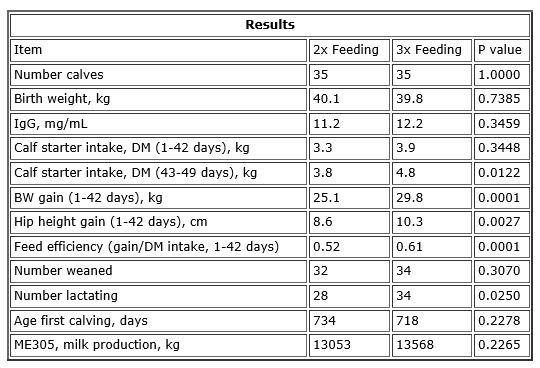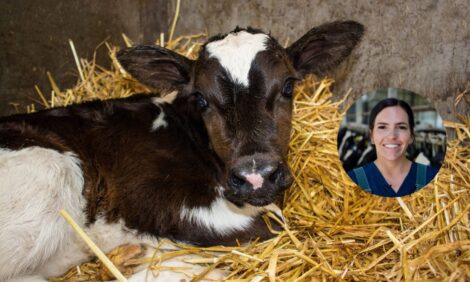



2014 World Dairy Expo: 3X Feeding Improves Calf Performance
ANALYSIS - New studies reveal just how important the role of nutrition plays in the health and viability of calves and increasing calf feed intake can make a big difference down the road, reports Sarah Mikesell, senior editor live from the World Dairy Expo in Madison, Wisconsin, USA.Research shows that calves may need more than the traditional two feedings per day to meet nutritional requirements, Dr. Donald C. Sockett, Epidemiologist/Microbiologist, Wisconsin Veterinary Diagnostic Laboratory, told attendees at the 2014 World Dairy Expo in Madison, Wisconsin this week.
Dr. Sockett reviewed short and long term impacts of a recent field trial where calves were fed milk either twice or three times per day.
Seventy Holstein heifer calves were enrolled in a trial designed to evaluate bo the short and log term effects of feeling a full potential milk replace (MR) diet (28% protein, 20% fat) either three times per ad or twice per day.
Within six hours of birth, calves were fed a commercial colostrum replacement product made from bovine colostrum that contained 150 g of IgG (Immunoglobulin G).
Calves were randomly assigned to either three time or twice per day feeding. A blood sample was collected from each calf one to three days after birth. Serum was tested for bovine IgG by single radial immunodiffusion.
Calves were housed outdoors in individual calf hutches until they were weaned and moved to group pens at 50-55 days of age.
All the calves were fed at 8 am and 9 pm. Calves fed three times a day received an additional meal at 2:30 pm. Calves were fed 815 g of MR/day from days 1 to 7, 1135g of MR/day from days 8-42 divided into either three or two feedings. Both groups of calves were fed 56g of MR once a day (pre-weaning process) from days 43-49. Calf starter (20% CP as fed) was offered to the calves beginning at 3-4 days of age. Calf starter intake was measured daily.
Calves were weighed and had their high height measured weekly. All the calves remained in the herd unless they died or were culled. Each animal's calving date was recorded and milk production assessed using mature-equivalent 305-d (ME305) milk yield estimated at greater than or equal to 120 days in milk.
Data was evaluated using analysis of variance and co-variance using G.L.M. procedure. The likelihood of calves being weaned, entering lactation and calculation of relative risk was analyzed using two-way contingency table analysis.
Calves fed three times a day had improved growth in hip height and weight gain, better feed efficiency, consumed more calf starter during the pre-weaning process and were more likely to enter lactation that calves fed twice per day.

To view the presentation, just click here.



